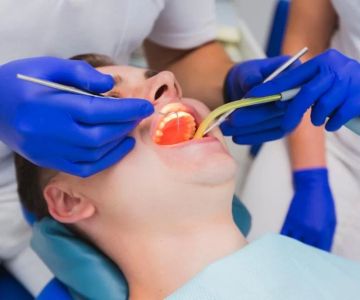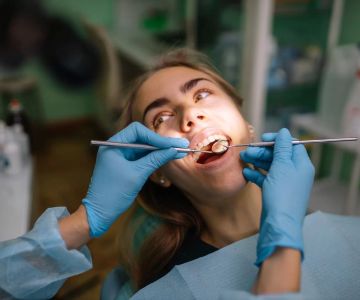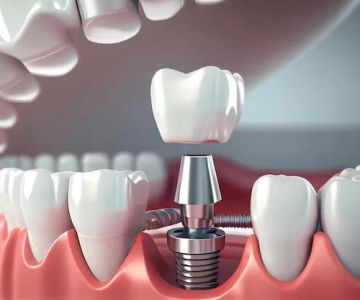The Importance of Bite Correction in Preventing Tooth Wear
- 1. Understanding Bite Correction
- 2. How Bite Issues Lead to Tooth Wear
- 3. Types of Bite Issues and Their Impact on Teeth
- 4. Benefits of Bite Correction in Preventing Tooth Wear
- 5. Professional Treatment Options for Bite Correction
1. Understanding Bite Correction
Bite correction is a critical dental procedure aimed at aligning the teeth and jaw to ensure a balanced and healthy bite. Misalignment of the bite, also known as malocclusion, can cause a variety of dental problems, including tooth wear, jaw pain, and even headaches. Understanding how proper bite correction can prevent long-term damage is essential for maintaining optimal dental health.
2. How Bite Issues Lead to Tooth Wear
When your teeth don’t align properly, it can result in uneven pressure on certain areas of the mouth, leading to tooth wear. This can cause gradual erosion of the enamel, which is the tooth’s protective outer layer. The more pressure put on teeth during activities like chewing or grinding, the faster tooth wear can occur.
Teeth Grinding (Bruxism) and Tooth Wear
One common result of bite misalignment is teeth grinding, also known as bruxism. People who grind their teeth often do so unconsciously while sleeping, and this can cause significant wear over time. Bite correction helps realign the teeth, reducing the pressure that leads to grinding and protecting the enamel from damage.
3. Types of Bite Issues and Their Impact on Teeth
Bite issues can take various forms, each affecting the teeth differently. Below are the most common types of bite misalignments and their impact on oral health:
Overbite
An overbite occurs when the upper teeth extend too far over the lower teeth. This can cause excessive wear on the lower teeth, especially the incisors, as they meet the upper teeth incorrectly.
Underbite
An underbite is the opposite, where the lower teeth extend beyond the upper teeth. This can result in stress on the teeth, causing them to wear down unevenly and even leading to jaw pain.
Crossbite
A crossbite happens when some upper teeth bite inside the lower teeth. This misalignment can cause gum recession, tooth wear, and even bone loss over time.
4. Benefits of Bite Correction in Preventing Tooth Wear
Correcting bite issues not only prevents further tooth wear but also brings a wide array of benefits to overall dental health. By addressing the root cause of tooth damage, bite correction offers the following advantages:
Protecting Tooth Enamel
Proper alignment of the teeth ensures that pressure is evenly distributed during biting and chewing. This reduces the risk of excessive wear on the enamel and helps preserve the natural strength and integrity of your teeth.
Preventing Jaw Pain and Tension
Misalignment of the teeth often leads to jaw pain and muscle tension. By correcting the bite, you can alleviate these issues, making daily activities such as eating and speaking more comfortable.
Reducing the Risk of Tooth Sensitivity
Excessive tooth wear caused by bite misalignment can lead to tooth sensitivity, especially to hot or cold temperatures. Bite correction can help avoid this discomfort by protecting the tooth enamel and ensuring proper alignment.
5. Professional Treatment Options for Bite Correction
If you’re experiencing tooth wear due to bite issues, several treatment options can help realign your teeth. Here are some of the most effective methods:
Braces
Traditional braces are a reliable method for correcting bite issues, whether it’s an overbite, underbite, or other misalignments. Braces gradually shift the teeth into their correct position, preventing further wear and enhancing overall dental health.
Invisalign
For those who prefer a more discreet option, Invisalign aligners offer a clear, comfortable solution for correcting bite problems. These removable trays are a popular choice for adults looking to address bite issues without the appearance of traditional braces.
Orthodontic Retainers
After treatment with braces or Invisalign, retainers help maintain the corrected bite. They ensure that teeth stay aligned, preventing any regression or further wear caused by misalignment.
If you're interested in exploring treatment options for bite correction, Dentistry Toothtruth offers expert advice and personalized treatment plans to protect your dental health.







 First Choice Dental- Verona4.0 (367 review)
First Choice Dental- Verona4.0 (367 review) Dominion Orthodontics5.0 (206 review)
Dominion Orthodontics5.0 (206 review) Babylon Dental Care4.0 (388 review)
Babylon Dental Care4.0 (388 review) Romeoville Smiles Dentistry4.0 (711 review)
Romeoville Smiles Dentistry4.0 (711 review) Dental Dreams4.0 (967 review)
Dental Dreams4.0 (967 review) Arts District Dental4.0 (370 review)
Arts District Dental4.0 (370 review) The Importance of Oral Health Education During Pregnancy for a Healthy Pregnancy
The Importance of Oral Health Education During Pregnancy for a Healthy Pregnancy Best Tips for Brushing Your Teeth Properly for Healthy Gums: Essential Techniques for Oral Health
Best Tips for Brushing Your Teeth Properly for Healthy Gums: Essential Techniques for Oral Health Why Skipping Dental Checkups Can Lead to Bigger Oral Health Problems
Why Skipping Dental Checkups Can Lead to Bigger Oral Health Problems Advantages of Porcelain Dental Restorations
Advantages of Porcelain Dental Restorations How Can Diabetes Cause Tooth and Gum Problems? Preventing and Managing Oral Health Issues
How Can Diabetes Cause Tooth and Gum Problems? Preventing and Managing Oral Health Issues Healthy Habits for Promoting Good Oral Health and Hygiene: Tips for a Healthy Smile
Healthy Habits for Promoting Good Oral Health and Hygiene: Tips for a Healthy Smile